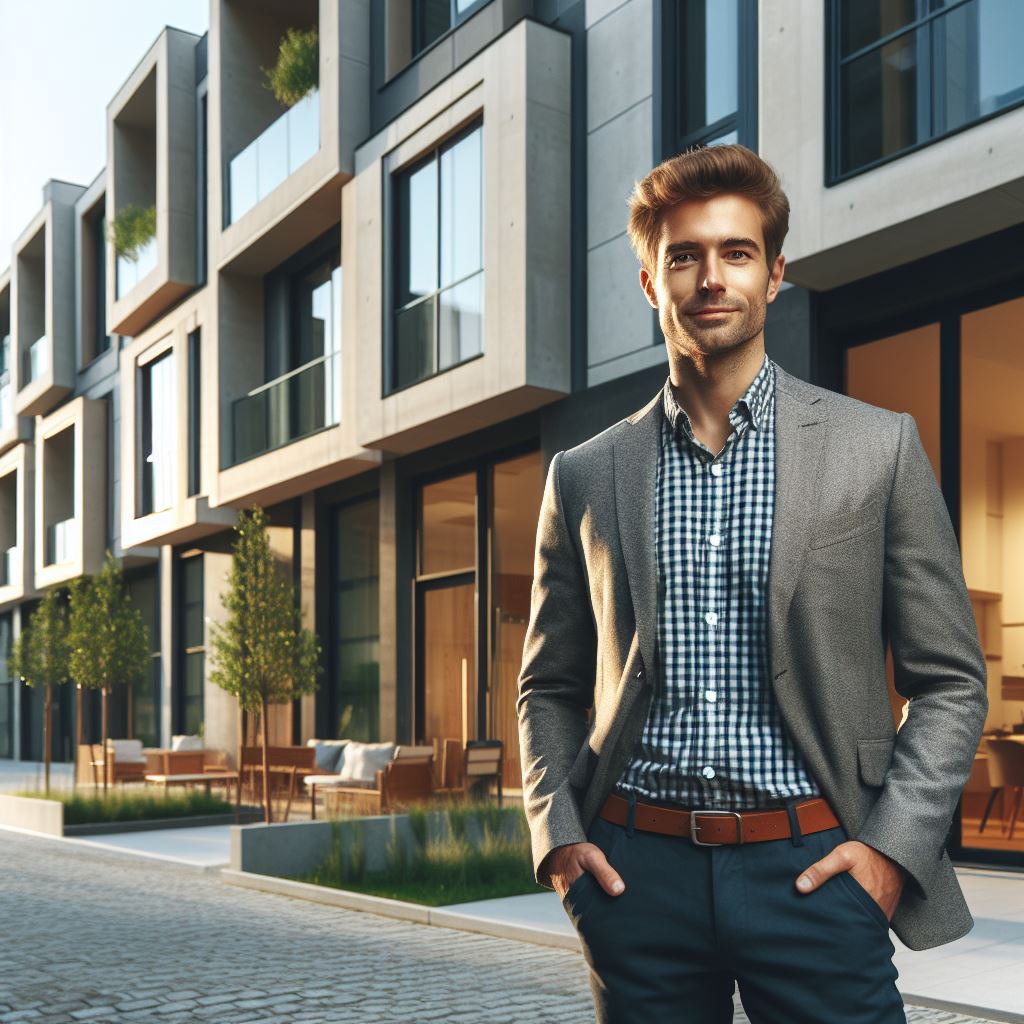Introduction
A. Define Mixed-Use Properties
- Mixed-use properties blend residential, commercial, and industrial spaces within a single development.
- Integration fosters a cohesive community where residents live, work, and socialize in proximity.
B. Increasing Popularity
- Urbanization fuels the rise of mixed-use properties, catering to the desire for convenience.
- Walkability, reduced commute times, and a vibrant lifestyle attract both residents and businesses.
C. Insights into 2024
- Explore evolving design trends shaping mixed-use spaces for adaptability and sustainability.
- Uncover technological integrations transforming the way people experience and interact within these developments.
- Delve into the economic impact of mixed-use projects, forecasting growth and potential challenges.
- Consider regulatory changes influencing the development landscape for these versatile properties.
- Anticipate the role of mixed-use properties in fostering resilience and community well-being post-pandemic.
- Gain perspectives from industry experts on emerging opportunities and best practices for successful mixed-use developments.
- Stay ahead with a comprehensive look at the evolving landscape of mixed-use properties in 2024.
Benefits of Mixed-Use Properties
Mixed-use properties have become a cornerstone of urban development, offering a myriad of advantages that cater to both residents and businesses alike.
A. Diverse Advantages
- Blend of residential, commercial, and recreational spaces.
- Synergies that enhance the overall quality of life.
- Economic resilience through diversified revenue streams.
B. Increased Convenience for Residents
- One-stop-shop for daily needs within the community.
- Reduced commute times, fostering a more sustainable lifestyle.
- Access to amenities like parks, shopping, and healthcare in close proximity.
C. Higher Potential for Foot Traffic and Customer Base
- Business synergy with complementary services and products.
- Increased visibility, attracting a more extensive customer demographic.
- Greater foot traffic translating into improved sales for local businesses.
D. Diverse Community and Social Interaction
- Social hubs and communal spaces foster community bonding.
- Opportunities for residents to engage in a variety of activities.
- Increased social capital, creating a sense of belonging.
E. Maximization of Land Use and Reduction in Sprawl
- Efficient land utilization with mixed functions in one area.
- Mitigation of urban sprawl, preserving green spaces and natural habitats.
- Sustainable development practices contributing to a healthier environment.
To sum it up, the 2024 landscape of mixed-use properties embodies a holistic approach to urban living.
This trend not only transforms physical spaces but also enriches the social fabric of communities, offering a sustainable model that balances economic, environmental, and social considerations.
As cities continue to evolve, mixed-use properties stand as a testament to the innovative urban planning strategies shaping our future.
Read: The Shift to Sustainable Industrial Sites
Market Trends and Predictions for 2024
A. Statistics and data on the growing demand for mixed-use properties
- The demand for mixed-use properties is soaring.
- Current statistics reveal a steady upward trajectory.
- Investors and homebuyers increasingly favor diverse property options.
B. Factors driving the growth of mixed-use properties
- Economic efficiency is a key driver.
- Synergies in residential and commercial spaces attract investors.
- Urban planners prioritize mixed-use developments for optimal land utilization.
C. Changing lifestyles and preferences of Millennials and Gen Z
- Millennials and Gen Z value convenience.
- A preference for live-work-play environments drives mixed-use property demand.
- Developers adapt to accommodate the evolving lifestyle expectations of younger generations.
D. Urbanization and the emphasis on sustainable development
- Urbanization fosters mixed-use growth.
- Sustainable development practices gain prominence.
- City planners integrate eco-friendly elements into mixed-use projects.
E. Rising interest in walkability and accessibility
- Walkability becomes a priority for residents.
- Proximity to amenities enhances property value.
- Developers respond with mixed-use projects that promote accessibility.
F. Future market trends for mixed-use properties in 2024
- Continued growth is anticipated.
- Hybrid spaces combining retail, residential, and office areas will flourish.
- Mixed-use properties will become integral to city landscapes.
G. Integration of new technologies in mixed-use developments
- Technology enhances user experience.
- Smart infrastructure and connectivity become standard.
- Mixed-use properties embrace innovation for improved efficiency.
H. Focus on sustainability and green spaces
- Green spaces in mixed-use developments gain importance.
- Sustainability features become a selling point.
- Environmentally conscious design principles shape the future of mixed-use properties.
I. Mixed-use properties to suburban areas
- Suburban areas witness a mixed-use boom.
- Demand extends beyond urban centers.
- Developers recognize the potential for diverse communities in suburban settings.
To summarize, the landscape of mixed-use properties in 2024 is shaped by a confluence of factors—economic trends, changing demographics, urbanization, and a growing emphasis on sustainability.
As technology integrates seamlessly and preferences evolve, mixed-use developments are poised to become even more integral to our living and working environments.
The future promises not just growth but a transformation in how we perceive and interact with the spaces we inhabit.
Read: Future of Warehousing: 2024 Analysis

Challenges and Solutions for Mixed-Use Properties in 2024
Mixed-use properties have gained significant popularity in recent years as they offer a dynamic and vibrant environment that combines residential, commercial, and recreational spaces within a single development.
However, along with their numerous advantages, these projects also face a range of challenges and obstacles that developers and investors must navigate to ensure success.
In this blog section, we will explore some of these challenges and highlight potential solutions and strategies to overcome them.
A. Zoning and Regulatory Issues
One of the main challenges faced by developers of mixed-use properties is navigating zoning and regulatory issues.
Municipalities often have strict zoning laws that may limit the types of activities allowed in certain areas, making it difficult to incorporate a diverse range of components in a single project.
However, collaboration with local authorities can be a key solution in overcoming this challenge.
By working closely with zoning boards and regulators, developers can advocate for favorable zoning regulations that support the integration of various components within their projects.
B. Financing and Investment Risks
Mixed-use projects typically require significant investments, and securing financing can be a challenge.
Lenders may be hesitant to provide funding due to the perceived complexities and risks associated with these developments.
To overcome this challenge, developers can explore innovative financing options and partnerships.
Crowdfunding, public-private partnerships, and real estate investment trusts (REITs) are just a few examples of alternative financing strategies that can help mitigate investment risks and attract capital for mixed-use projects.
C. Balancing Various Components in a Mixed-Use Project
Creating a successful mixed-use development requires a careful balance of various components, such as residential, commercial, and recreational spaces.
Finding the right mix that appeals to target demographics while ensuring compatibility between different elements can be a challenge.
However, careful planning and design can help overcome this obstacle.
Conducting market research, engaging with potential end-users, and working with experienced architects and urban planners can ensure that the project’s components are well-integrated and complementary.
D. Potential Solutions and Strategies
1. Collaboration with Local Authorities for Favorable Zoning Regulations
Developers should foster strong relationships with local authorities and engage proactively in the zoning and regulatory process.
By highlighting the benefits of mixed-use properties, developers can demonstrate how such developments can contribute to vibrant, sustainable communities.
This collaboration can lead to the creation of more flexible zoning regulations that better accommodate mixed-use projects.
2. Innovative Financing Options and Partnerships
To attract financing, developers must explore alternatives to traditional lending.
Collaborating with crowdfunding platforms, seeking out public-private partnerships, and forming strategic alliances with established real estate developers or institutions can help mitigate investment risks and provide access to capital for mixed-use projects.
3. Careful Planning and Design to Ensure Compatibility of Components
Prioritizing careful planning and design is crucial to creating successful mixed-use projects.
Engaging with potential end-users during the planning process can provide valuable insights into their needs and preferences.
Additionally, hiring experienced architects and urban planners with a proven track record in mixed-use development can ensure that the various components of the project are well-balanced and compatible.
In a nutshell, while mixed-use properties offer numerous benefits, they also present unique challenges to developers and investors.
By addressing zoning and regulatory issues, exploring innovative financing options, and prioritizing careful planning and design, these challenges can be overcome.
As the demand for vibrant, integrated communities continues to grow, the successful development of mixed-use properties in 2024 and beyond will become increasingly important.
Read: Energy Efficiency in Manufacturing Sites
Case Studies: Successful Mixed-Use Developments in 2024
In recent years, mixed-use properties have gained immense popularity among developers and residents alike.
These properties, which combine residential, commercial, and sometimes even recreational spaces, offer a unique lifestyle that caters to the needs and preferences of modern individuals.
In this blog section, we will explore some vibrant and successful mixed-use developments in various locations, highlighting the key factors contributing to their success.
A. Strategic Location and Demographics
One example of a successful mixed-use development is City Center in downtown Seattle.
Situated in a prime location, surrounded by major businesses and tech companies, City Center attracts a young and affluent demographic.
This strategic location ensures a steady stream of customers for the commercial spaces within the development, supporting the overall success of the project.
Another notable mixed-use development is Marina Bay Sands in Singapore.
This iconic property is located in the heart of the city, offering breathtaking views of the Marina Bay waterfront.
Its central location attracts both tourists and locals, making it a highly vibrant and desirable destination.
B. Thoughtful Design and Integration of Components
The success of a mixed-use development heavily depends on the thoughtful design and integration of its various components.
One such example is The Grove in Los Angeles. With a perfect blend of retail, entertainment, and residential elements, The Grove offers a seamless experience to its visitors.
Its open-air design, lush landscaping, and carefully curated mix of shops and restaurants create a unique and vibrant atmosphere.
Similarly, Zorlu Center in Istanbul, Turkey, is renowned for its architectural brilliance and integration of residential, office, retail, and entertainment spaces.
Its sleek and modern design, coupled with well-planned connectivity between different components, ensures convenience and accessibility for residents and visitors alike.
C. Effective Property Management and Community Engagement
Last but not least, successful mixed-use developments excel at effective property management and community engagement.
A prime example of this is Southbank Centre in London.
The management team ensures the seamless operation of the cultural and educational institutions, retail spaces, and residential units within the development.
Regular community events and programs are organized to engage with residents and create a strong sense of belonging.
Another notable example is Hudson Yards in New York City.
The property management team takes pride in maintaining world-class facilities while actively involving the community in decision-making processes.
Regular surveys and consultations with residents and business owners ensure that the development aligns with their needs and aspirations.
All in all, successful mixed-use developments in 2024 are characterized by strategic location and demographics, thoughtful design and integration of components, as well as effective property management and community engagement.
These factors contribute to creating vibrant and thriving spaces that attract both residents and visitors, offering a unique lifestyle experience.
Read: 2024 U.S. Office Space Market Outlook
Explore Further: E-Commerce & Warehouse Spaces
Conclusion
The landscape of real estate has evolved, and mixed-use properties have emerged as the epitome of versatility, combining residential, commercial, and recreational elements in a harmonious coexistence.
The importance of mixed-use properties lies in their ability to create vibrant, sustainable communities.
In 2024, we stand at the threshold of a new era where these developments are not merely structures but catalysts for urban renewal and economic vitality.
The past few years have shown a remarkable surge in demand for spaces that seamlessly integrate living, working, and leisure, a trend that is poised to accelerate in the coming years.
The potential and opportunities that await investors and developers in the mixed-use sector are nothing short of exhilarating.
As urbanization continues to reshape our cities, the adaptability and resilience of mixed-use properties become even more apparent.
The multifaceted nature of these developments positions them as resilient assets, capable of weathering economic fluctuations and societal changes.
In 2024, the horizon of mixed-use properties beckons with promise.
The convergence of various functions within a single space not only enhances convenience for residents but also creates a sustainable environment that fosters social interaction and community engagement.
As the demand for live-work-play environments intensifies, the opportunities for innovative mixed-use projects are limitless.




